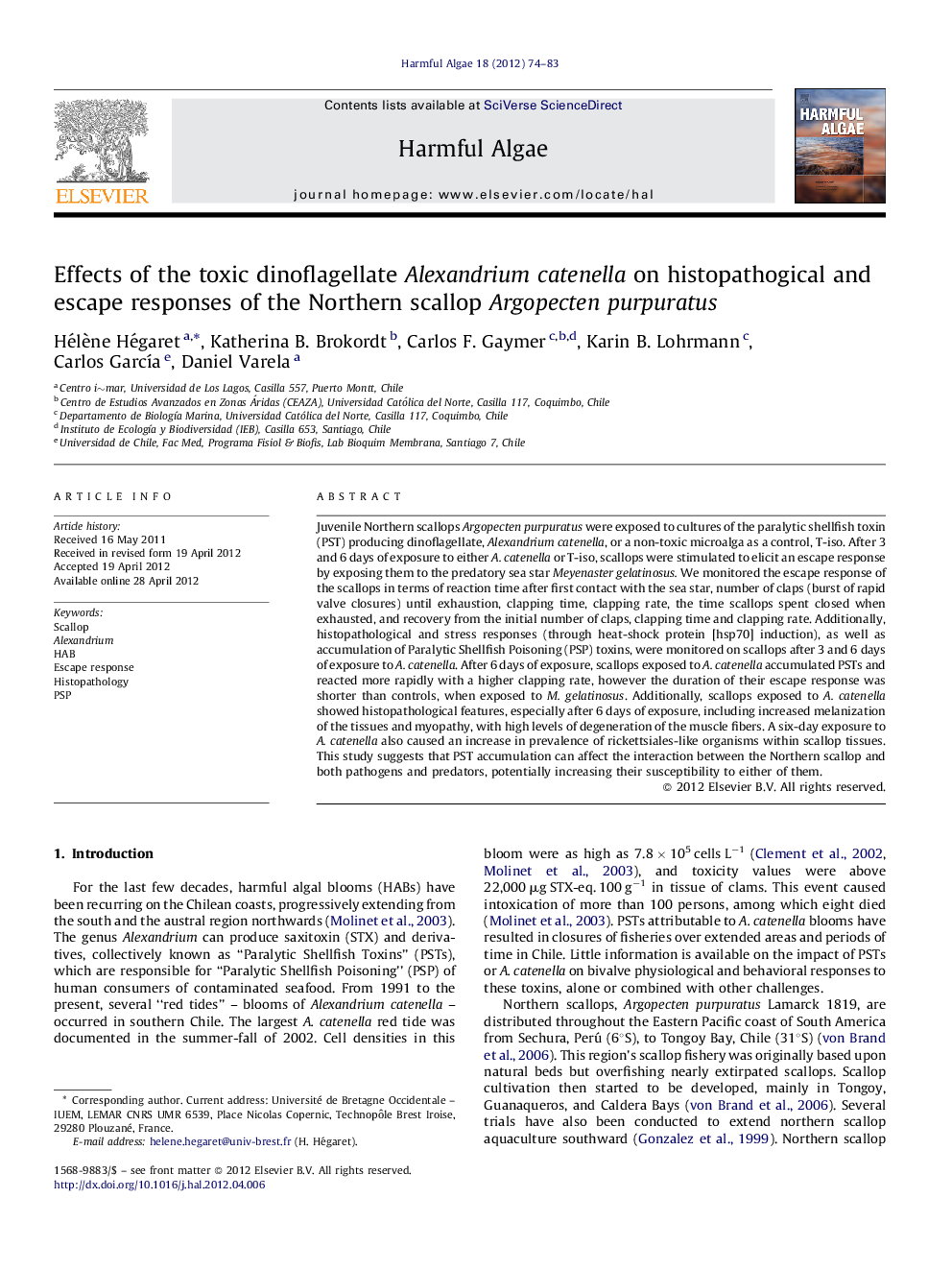| Article ID | Journal | Published Year | Pages | File Type |
|---|---|---|---|---|
| 4545538 | Harmful Algae | 2012 | 10 Pages |
Juvenile Northern scallops Argopecten purpuratus were exposed to cultures of the paralytic shellfish toxin (PST) producing dinoflagellate, Alexandrium catenella, or a non-toxic microalga as a control, T-iso. After 3 and 6 days of exposure to either A. catenella or T-iso, scallops were stimulated to elicit an escape response by exposing them to the predatory sea star Meyenaster gelatinosus. We monitored the escape response of the scallops in terms of reaction time after first contact with the sea star, number of claps (burst of rapid valve closures) until exhaustion, clapping time, clapping rate, the time scallops spent closed when exhausted, and recovery from the initial number of claps, clapping time and clapping rate. Additionally, histopathological and stress responses (through heat-shock protein [hsp70] induction), as well as accumulation of Paralytic Shellfish Poisoning (PSP) toxins, were monitored on scallops after 3 and 6 days of exposure to A. catenella. After 6 days of exposure, scallops exposed to A. catenella accumulated PSTs and reacted more rapidly with a higher clapping rate, however the duration of their escape response was shorter than controls, when exposed to M. gelatinosus. Additionally, scallops exposed to A. catenella showed histopathological features, especially after 6 days of exposure, including increased melanization of the tissues and myopathy, with high levels of degeneration of the muscle fibers. A six-day exposure to A. catenella also caused an increase in prevalence of rickettsiales-like organisms within scallop tissues. This study suggests that PST accumulation can affect the interaction between the Northern scallop and both pathogens and predators, potentially increasing their susceptibility to either of them.
► Northern scallops were exposed for 3 and 6 days to Alexandrium catenella. ► Scallop escape response to predator was modified by A. catenella. ► A. catenella caused tissue damages. ► Prevalence of rickettsiales-like organisms increased with A. catenella exposure. ► HAB exposure can affect host/parasite or host/predator interactions.
